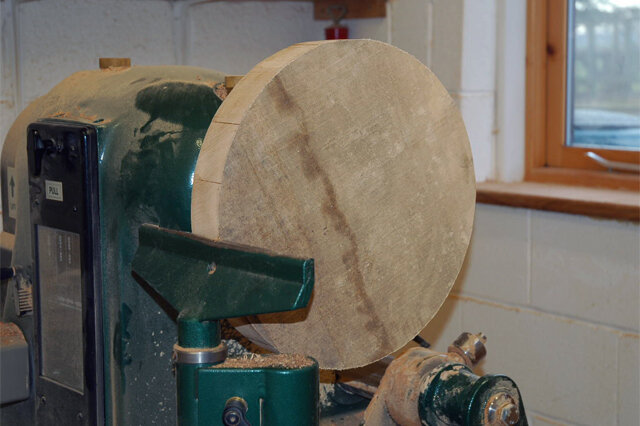Making a dip platter
It’s only January and I’ve already got some great ideas for this coming year! Hollow forms, serving boards and possibly, even some furniture, are all currently going through the design stage! However, before all of that, I need to make some more dip platters…
These are a popular table piece, as featured in the dining section of my web gallery. I prefer to make them in sycamore, since it is naturally food safe and is less lightly to twist when dry – quite important for a platter. I start by mounting the sycamore blank to the lathe with a faceplate. I’m using short 17mm screws, since the inside is raised and may not clear the screw holes, if longer ones are used. The outer edge is turned to the diameter of the platter and then marked accordingly with a pencil – I make every one to the same dimension, including the profile on the rim.
The underside is shaped and a foot is created for the chuck. This will be removed during the final stage of turning. The platter is then reversed and mounted on the chuck ready for hollowing.
I shape the rim first, before hollowing the inside. This reduces vibration, since the timber is still quite solid at this stage. Once I am happy with the rim, I will use the gouge to remove the bulk of the timber.
The rebate for the ramekin sits a little lower than the outer rim. I use the gouge to turn a surface of the correct height, ready for marking up. The final rebate needs to be done quite carefully – even if it’s only a tiny bit too big, the ramekin will be a loose fit inside. I make the final cut with a parting tool and test with a ramekin until I’m satisfied it is the correct fit.
I then sand the inner faces of the platter, in the same manner as I would sand a bowl. I’m always careful I retain the crisp edges, which are crucial for the design and aesthetics. Once this is done, I’ll use my homemade reversing device to remove the chucking base from the platter. All that's needed now, is a generous coating of mineral oil - you can see a finished example in my gallery.






